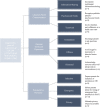Parent Experience of Communication about Children's Surgery: A Qualitative Analysis
- PMID: 34046536
- PMCID: PMC8143772
- DOI: 10.1097/pq9.0000000000000403
Parent Experience of Communication about Children's Surgery: A Qualitative Analysis
Abstract
Parent experience is a core component of the quality of pediatric care and an increasingly common focus of quality improvement initiatives. However, the parent experience of communication in the pediatric surgical setting remains unexplored.
Methods: We conducted semi-structured interviews with 20 parents of children undergoing surgery. Interviews were analyzed using directed qualitative content analysis.
Results: Content analysis revealed 3 overarching themes. The theme of "provider-parent communication" included interpersonal behaviors and communication-originating skills of the surgeon. Parents valued surgeons incorporating multimodal information-sharing techniques, recognizing children's psychological needs, providing reassurance, engaging in teamwork, and including parents. The theme of "parental emotional experiences" included domains of parent worry, intimidation, offense, self-doubt, mistrust, and strength surrounding their child's surgery. Parents felt simultaneously responsible for their child's welfare and for understanding medical information. The theme of "process improvement" included preparation for surgery, efficiency, managing delays, anesthesia induction, emergence from anesthesia, privacy, and preparation for recovery.
Conclusions: Themes identified through these parental narratives and proposed solutions inform quality improvement efforts related to surgeon communication strategies and facilitate family-centered surgical care for children. Parents often provided solutions after they described concerns, which attests to the utility of parent perspectives.
Copyright © 2021 the Author(s). Published by Wolters Kluwer Health, Inc.
Figures
References
-
- Homer CJ, Marino B, Cleary PD, et al. . Quality of care at a children’s hospital: the parent’s perspective. Arch Pediatr Adolesc Med. 1999; 153:1123–1129. - PubMed
-
- Groene O. Patient centredness and quality improvement efforts in hospitals: rationale, measurement, implementation. Int J Qual Health Care. 2011; 23:531–537. - PubMed
-
- Street RL, Jr, Makoul G, Arora NK, et al. . How does communication heal? Pathways linking clinician-patient communication to health outcomes. Patient Educ Couns. 2009; 74:295–301. - PubMed
-
- National Research Council. Crossing the Quality Chasm: A New Health System for the 21st Century. Washington, DC: National Academies Press; 2001. - PubMed
LinkOut - more resources
Full Text Sources

